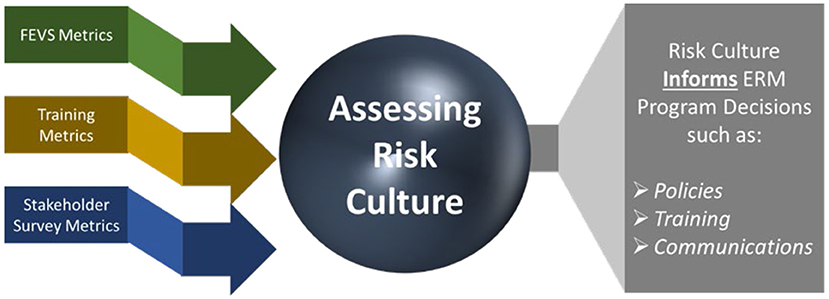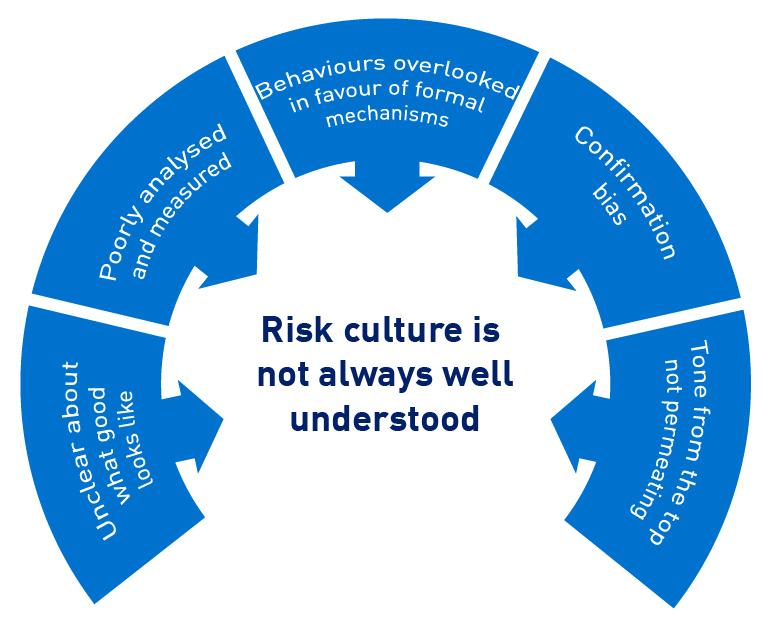Assessing Your Risk Tolerance: A Personal Evaluation
Understanding one’s personal risk tolerance is crucial for entrepreneurs to make informed decisions about their business. Risk tolerance refers to the degree of uncertainty an individual is willing to accept in pursuit of their goals. Entrepreneurs with a high risk tolerance may be more likely to take bold action and invest in new opportunities, while those with a low risk tolerance may be more cautious and risk-averse.
To assess your personal risk tolerance, consider the following self-reflection exercises:
1. Think about your past experiences with risk-taking. Have you ever taken a risk that paid off, or one that didn’t? What did you learn from these experiences?
2. Consider your financial situation. Do you have a safety net in place, or are you living paycheck to paycheck? This can impact your willingness to take risks.
3. Evaluate your personality traits. Are you a naturally cautious person, or do you tend to be more impulsive?
Examples of risk-tolerant entrepreneurs include Richard Branson, who has taken numerous risks throughout his career, including launching a music label and an airline. Another example is Sara Blakely, who invested her entire savings in her startup, Spanx, and went on to become a successful entrepreneur.
By understanding your personal risk tolerance, you can make more informed decisions about your business and develop strategies to manage risk effectively. This self-awareness is essential for entrepreneurship and risk management, as it allows you to balance your risk-taking with caution and make decisions that align with your goals and values.
How to Identify and Mitigate Key Business Risks
Entrepreneurship and risk management go hand-in-hand, and identifying key business risks is crucial to mitigating potential downsides. Market volatility, regulatory changes, and talent acquisition are just a few examples of common business risks that can impact an organization’s success.
To identify key business risks, entrepreneurs can conduct a thorough risk assessment, which involves analyzing internal and external factors that could impact the business. This might include reviewing financial statements, assessing market trends, and evaluating the competitive landscape.
Once key business risks have been identified, entrepreneurs can develop strategies to mitigate them. For example, companies can diversify their revenue streams to reduce dependence on a single market or customer. They can also develop contingency plans to address potential risks, such as supply chain disruptions or regulatory changes.
Real-life examples of companies that have successfully managed key business risks include Amazon, which has diversified its revenue streams through its cloud computing and advertising businesses, and Coca-Cola, which has developed a robust risk management strategy to address potential risks such as supply chain disruptions and regulatory changes.
Other strategies for mitigating key business risks include:
– Developing a risk management framework that outlines potential risks and mitigation strategies
– Establishing a risk management team to monitor and address potential risks
– Conducting regular risk assessments to identify new and emerging risks
– Developing contingency plans to address potential risks
By identifying and mitigating key business risks, entrepreneurs can reduce the potential for negative impacts on their business and increase the likelihood of long-term success.
https://www.youtube.com/watch?v=-hYRqLsHgtI
Building a Risk-Resilient Business Model
Entrepreneurship and risk management are closely linked, and building a risk-resilient business model is crucial for long-term success. A risk-resilient business model is one that can withstand and adapt to changing market conditions, regulatory changes, and other external factors.
One key strategy for building a risk-resilient business model is diversification. By diversifying revenue streams, companies can reduce their dependence on a single market or customer, making them more resilient to changes in the market. For example, a company that offers a range of products or services can continue to operate even if one of its products or services experiences a decline in demand.
Another strategy is contingency planning. This involves identifying potential risks and developing plans to mitigate them. For example, a company might develop a plan to address a potential supply chain disruption, such as identifying alternative suppliers or developing a backup plan for logistics.
Adaptability is also key to building a risk-resilient business model. Companies that are able to adapt quickly to changing market conditions are more likely to succeed than those that are slow to respond. This might involve investing in research and development, staying up-to-date with industry trends, and being open to new ideas and innovations.
Real-life examples of companies that have built risk-resilient business models include:
– Amazon, which has diversified its revenue streams through its cloud computing and advertising businesses
– Coca-Cola, which has developed a robust risk management strategy to address potential risks such as supply chain disruptions and regulatory changes
– Google, which has invested heavily in research and development, allowing it to stay ahead of the curve in terms of innovation and adaptability
By incorporating these strategies into their business model, entrepreneurs can build a risk-resilient business that is better equipped to withstand and adapt to changing market conditions.
Leveraging Risk Management Tools and Techniques
Risk management is a critical component of entrepreneurship and risk management, and leveraging the right tools and techniques can help entrepreneurs make informed decisions and mitigate potential risks. One of the most commonly used risk management tools is SWOT analysis, which involves identifying an organization’s strengths, weaknesses, opportunities, and threats.
Decision trees are another useful tool for risk management. These visual representations of possible outcomes can help entrepreneurs evaluate different scenarios and make informed decisions. For example, a decision tree might be used to evaluate the potential risks and rewards of launching a new product.
Scenario planning is another technique that can be used to manage risk. This involves identifying possible future scenarios and developing strategies to address them. For example, a company might develop a scenario plan to address the potential risks of a economic downturn.
Other risk management tools and techniques include:
– Sensitivity analysis, which involves evaluating how changes in assumptions or variables might impact outcomes
– Monte Carlo simulations, which involve using statistical models to evaluate the potential outcomes of different scenarios
– Break-even analysis, which involves evaluating the point at which a business becomes profitable
By leveraging these risk management tools and techniques, entrepreneurs can make more informed decisions and mitigate potential risks. For example, a company might use SWOT analysis to identify potential risks and opportunities, and then use decision trees to evaluate different scenarios and make informed decisions.
Real-life examples of companies that have successfully leveraged risk management tools and techniques include:
– Google, which has used scenario planning to evaluate the potential risks and rewards of new product launches
– Amazon, which has used sensitivity analysis to evaluate the potential impact of changes in assumptions or variables on its business outcomes
– Microsoft, which has used break-even analysis to evaluate the point at which its business becomes profitable
By incorporating these risk management tools and techniques into their business strategy, entrepreneurs can make more informed decisions and mitigate potential risks.
Managing Risk in the Face of Uncertainty
Entrepreneurship and risk management are closely linked, and managing risk in uncertain environments is a critical component of success. Uncertainty can arise from a variety of sources, including economic downturns, regulatory changes, and rapid technological advancements.
One of the key challenges of managing risk in uncertain environments is adapting to changing circumstances. This requires entrepreneurs to be agile and responsive, able to pivot their business strategy quickly in response to changing market conditions.
Another challenge is managing uncertainty itself. This can involve using tools and techniques such as scenario planning and sensitivity analysis to evaluate potential outcomes and develop strategies to address them.
Real-life examples of companies that have successfully managed risk in uncertain environments include:
– Netflix, which has adapted its business strategy in response to changing market conditions, including the rise of streaming services and the decline of DVD rentals
– Amazon, which has used scenario planning to evaluate potential outcomes and develop strategies to address them, including the potential risks and rewards of expanding into new markets
– Google, which has used sensitivity analysis to evaluate the potential impact of changes in assumptions or variables on its business outcomes, including the potential risks and rewards of investing in new technologies
By adapting to changing circumstances and managing uncertainty, entrepreneurs can reduce the potential risks associated with uncertainty and increase the potential rewards.
Some strategies for managing risk in uncertain environments include:
– Diversifying revenue streams to reduce dependence on a single market or customer
– Developing contingency plans to address potential risks and opportunities
– Investing in research and development to stay ahead of the curve in terms of innovation and technology
– Building a risk-aware culture within the organization, including training programs, incentives, and leadership by example
By incorporating these strategies into their business strategy, entrepreneurs can manage risk effectively in uncertain environments and achieve long-term success.
Learning from Failure: The Importance of Post-Mortem Analysis
Entrepreneurship and risk management are closely linked, and learning from failure is a critical component of success. Post-mortem analysis is a valuable tool for entrepreneurs to identify areas for improvement and refine their risk management strategies.
A post-mortem analysis is a thorough examination of a business failure or setback, with the goal of identifying the root causes of the failure and developing strategies to prevent similar failures in the future.
Conducting a post-mortem analysis can help entrepreneurs to:
– Identify areas for improvement in their risk management strategies
– Develop strategies to prevent similar failures in the future
– Refine their business model and operations to reduce the risk of failure
– Improve their decision-making processes and reduce the risk of poor decision-making
Real-life examples of companies that have successfully used post-mortem analysis to learn from failure include:
– Apple, which conducted a post-mortem analysis of its failed Newton personal digital assistant and used the lessons learned to develop the successful iPhone
– Google, which conducted a post-mortem analysis of its failed Google+ social media platform and used the lessons learned to develop the successful Google Photos
– Amazon, which conducted a post-mortem analysis of its failed Fire Phone and used the lessons learned to develop the successful Echo smart speaker
By conducting a post-mortem analysis, entrepreneurs can learn from their failures and use the lessons learned to improve their risk management strategies and achieve long-term success.
Some tips for conducting a post-mortem analysis include:
– Identify the root causes of the failure
– Develop strategies to prevent similar failures in the future
– Refine the business model and operations to reduce the risk of failure
– Improve decision-making processes and reduce the risk of poor decision-making
By following these tips, entrepreneurs can use post-mortem analysis to learn from their failures and achieve long-term success.
Cultivating a Risk-Aware Organizational Culture
Entrepreneurship and risk management are closely linked, and cultivating a risk-aware organizational culture is critical for long-term success. A risk-aware culture is one in which employees are encouraged to identify and report potential risks, and where risk management is integrated into all aspects of the business.
One of the key benefits of a risk-aware culture is that it encourages employees to think critically about risk and to take ownership of risk management. This can help to identify potential risks earlier, and to develop strategies to mitigate them.
Some tips for cultivating a risk-aware culture include:
– Providing training programs to educate employees on risk management and risk awareness
– Offering incentives for employees to identify and report potential risks
– Encouraging open communication and collaboration across departments and levels of the organization
– Leading by example, with leaders and managers demonstrating a commitment to risk awareness and risk management
Real-life examples of companies that have successfully cultivated a risk-aware culture include:
– Google, which has a strong culture of innovation and risk-taking, but also has a robust risk management framework in place
– Amazon, which has a culture of customer obsession and long-term thinking, and which has developed a risk management strategy that is aligned with these values
– Microsoft, which has a culture of innovation and experimentation, and which has developed a risk management framework that encourages employees to think critically about risk
By cultivating a risk-aware culture, entrepreneurs can create an organization that is better equipped to manage risk and to achieve long-term success.
Some of the benefits of a risk-aware culture include:
– Improved risk management and reduced risk exposure
– Increased employee engagement and motivation
– Better decision-making and improved business outcomes
By incorporating these benefits into their organization, entrepreneurs can create a risk-aware culture that drives long-term success.
Cultivating a Risk-Aware Organizational Culture
Entrepreneurship and risk management are closely linked, and cultivating a risk-aware organizational culture is critical for long-term success. A risk-aware culture is one in which employees are encouraged to identify and report potential risks, and where risk management is integrated into all aspects of the business.
One of the key benefits of a risk-aware culture is that it encourages employees to think critically about risk and to take ownership of risk management. This can help to identify potential risks earlier, and to develop strategies to mitigate them.
Some tips for cultivating a risk-aware culture include:
– Providing training programs to educate employees on risk management and risk awareness
– Offering incentives for employees to identify and report potential risks
– Encouraging open communication and collaboration across departments and levels of the organization
– Leading by example, with leaders and managers demonstrating a commitment to risk awareness and risk management
Real-life examples of companies that have successfully cultivated a risk-aware culture include:
– Google, which has a strong culture of innovation and risk-taking, but also has a robust risk management framework in place
– Amazon, which has a culture of customer obsession and long-term thinking, and which has developed a risk management strategy that is aligned with these values
– Microsoft, which has a culture of innovation and experimentation, and which has developed a risk management framework that encourages employees to think critically about risk
By cultivating a risk-aware culture, entrepreneurs can create an organization that is better equipped to manage risk and to achieve long-term success.
Some of the benefits of a risk-aware culture include:
– Improved risk management and reduced risk exposure
– Increased employee engagement and motivation
– Better decision-making and improved business outcomes
By incorporating these benefits into their organization, entrepreneurs can create a risk-aware culture that drives long-term success.






